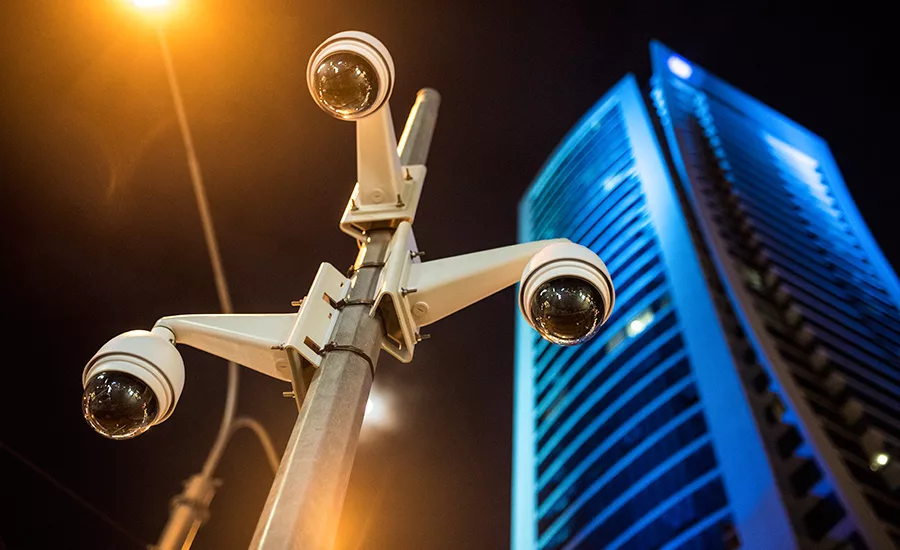The Emerging Potential for Video Analytics-as-a-Service
Using cloud-based video analytics solutions for efficient and cost-optimized physical security use cases

Video surveillance is one of the fastest growing segments in the physical security industry. In the prevailing security environment, the need for video surveillance is growing exponentially. From smart cities to stadiums, from retail mega-markets to homes, video surveillance has become a pervasive phenomenon. Several petabytes of video data are being generated globally every year from this growing number of video surveillance installations.
However, a large amount of video which is captured is never analyzed for actionable intelligence and, in many cases, a large team of human operators is required to monitor the video feeds. As video archives grow in size and quality, traditional storage and analysis methods are found to be high cost and do not support timely analysis and action. In many environments, video feeds are required to be stored for durations ranging from months to years for compliance purposes, adding to the lifecycle costs of video surveillance solutions. Standalone video surveillance solutions are, therefore, not truly efficient or optimized for cost and need to be augmented with physical security staff.
It is in this context that cloud based, Video Analytics-as-a-service (VAaaS) offerings can offer significant benefits. Software based video analytics solutions are typically deployed on cloud infrastructure (e.g. Google Cloud Platform or Amazon Web Services) and feature machine learning algorithms that are capable of detecting patterns relevant to each security context. Technologies such as the Google Cloud Vision API have been trained to recognize tens of thousands of objects, including human faces, as well as read text, identify emotions and identify key landmarks.
When integrated with existing video capturing devices and networks, these solutions can enable a host of physical security use cases. These include intrusion detection, perimeter defense, advanced object tracking, loitering detection, trip wire counting, human traffic flow, people counting, crowd density monitoring, audience profiling and face indexing. This can help reduce the need for deploying large physical security teams to perform repetitive and mundane tasks and empower human operators with actionable intelligence.
For example, at the Sochi airport, as part of the Winter Olympics in 2014, facial recognition based on video feeds was enabled. Similarly, at a leading football venue in Turkey and a large temple premise in India, which attracts millions of pilgrims every year, video analytics solutions were deployed for crowd management. This included people counting, loiter detection and human traffic flow management.
VAaaS solutions, when hosted on cloud infrastructure, can deliver the scalability required for large physical deployments where hundreds of cameras are delivering video feeds. Auto-scaling features of cloud platforms, which automatically scale up and down the background IT infrastructure, can be used to run on-demand analytics. This enables rapid runs of highly compute-intensive video analytics jobs and timely action on the videos captured. Also, during periods of low traffic, the IT infrastructure is automatically scaled down, delivering strong cost benefits.
VAaaS solutions significantly reduce the staffing needs in Security Operations Centers (SOCs) and can help human operators focus on the incidents highlighted by video analytics instead of the video feeds themselves. For example, in the case of traffic management centers deployed across a city, real time video analytics can help traffic cops proactively intervene in potentially troublesome traffic scenarios. Similarly, in retail chains, theft and pilferage alarms can be triggered by video analytics software that is capable of predictive analysis of videos.
Storage of video feed archives has been traditionally one of the largest components of the total lifecycle costs of video analytics solutions. VAaaS solutions use a fundamentally different approach to the storage of video feeds. They leverage multi-tier cloud storage infrastructure to enable significant cost reductions. Cloud vendors provide differentiated offerings for storage and analysis of “hot objects,” which are currently being analyzed, and low cost options for “cold objects,” which are in the form of backups and archives. Adoption of layered storage offerings from cloud vendors can significantly reduce the cost of storing video archives for longer durations.
Traditionally, video analytics solutions have required heavy upfront investment. In an as-a-service scenario, clients can benefit from a pay-as-you-go payment model and also from having the most updated application versions being served to them at all times. VAaaS solutions can also reduce the need for large teams of human operators and enable a proactive approach to security by providing critical analytics at the right time.
Video analytics solutions require extensive system integration efforts involving multiple components including the camera, the backend storage and processing systems and the transmission network. Opportunities exist for optimization and innovation on both the technology and commercial front on each element of the stack. As it stands today, end-to-end solutions are not available off-the-shelf. This is where leading global system integrators can be the ideal suppliers for video analytics solutions and offer great value through continuous improvements and innovations. VAaaS solutions can help CIOs and CSOs deliver a strong value proposition to meet their organization’s physical security needs, and are typically adopted in a top-down approach.
Looking for a reprint of this article?
From high-res PDFs to custom plaques, order your copy today!





